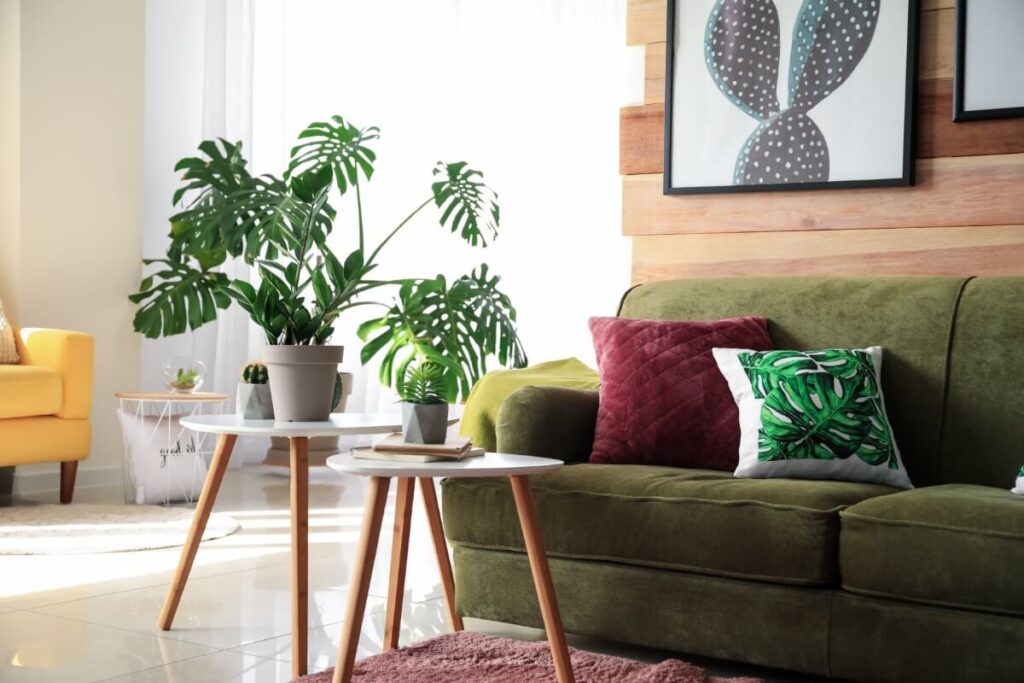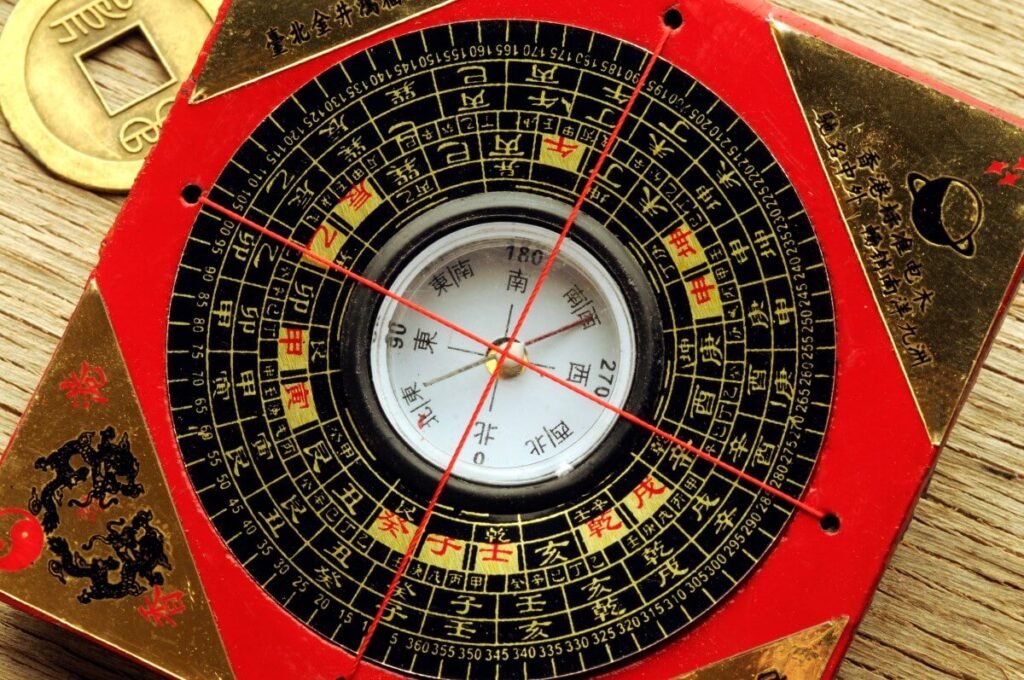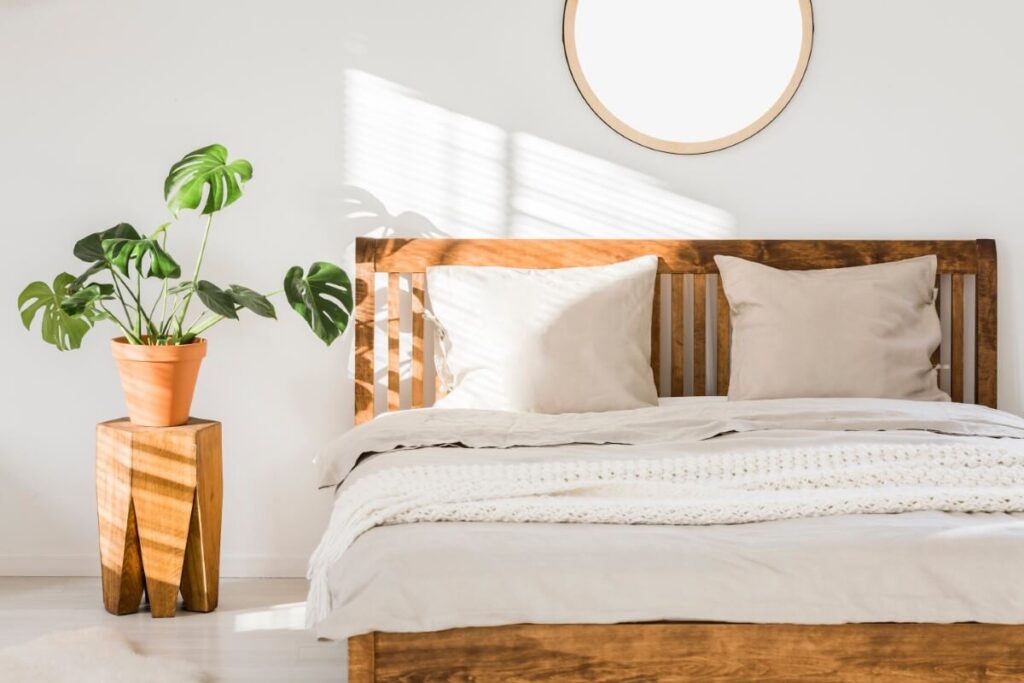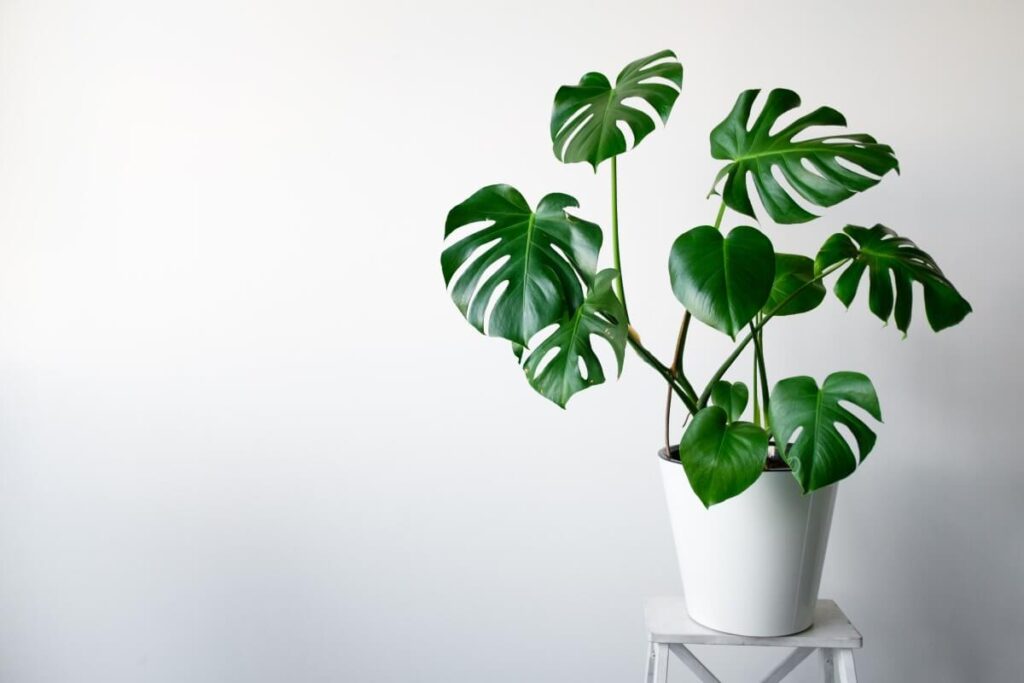The Best Places for Monstera Plants for Feng Shui and Optimal Care
Although Monstera plants were not one of the first tropical plants to be domesticated as houseplants, they are one of the most beneficial, sought after and popular plants available today. There are dozens of varieties of Monstera available as houseplants, each sharing similar care requirements despite their different appearance. Monstera needs more than just regular care such as watering and fertilizing to thrive. Proper placement in the home ensures that it will thrive, along with encouraging a good flow of energy through practices such as Feng Shui. This guide walks you through everything you need to know about the best position for Monstera plants in the home.
Where to place Monstera plants in the home
Monstera plants prefer warmth and indirect light, so placement near a southeast or east window is recommended for optimal growth. In the practice of Feng Shui, arranging large potted plants such as Monstera around the home is believed to encourage new growth, expansion and positive development such as the accumulation of wealth.
About Monstera Plants

Monstera is a whole genus that includes almost 50 different plants. Only a little more than a dozen of the species are grown as houseplants, but some of the species are also divided into several forms and varieties to give plant owners more options.
The name Monstera comes from the odd or unusual appearance of most of the species within the genus. Monstera’s native range includes most of the tropical parts of Central and South America. The plants are found especially in Guatemala and the southern regions of Mexico.
Monstera deliciosa, also known as Swiss cheese plant, is the species most commonly grown as a houseplant. Its scientific name comes from its large and delicious fruit, which only occurs on plants grown outdoors. Other popular varieties include Monstera Obliqua, Monstera Peru and Variegated Monstera. Most types of Monstera are considered toxic to pets and humans.
All Monstera plants grow as climbing vines in their native habitats. But most varieties end up supporting themselves with multiple stems if grown without support. The most significant growth and largest leaves come from allowing the Monstera vine to attach to a support or post of some kind.
Fenestrations, or the openings in the leaves that give them their distinctive shape, develop only on mature and healthy specimens. Adjusting the conditions for a Monstera that produces solid leaves will help future foliage emerge with the iconic openings or slits that this genus is known for.
Propagating Monstera plants is also possible with a little care and persistence.
Monstera Plants and Feng Shui

China is the home of Feng Shui, a method of encouraging good energy flow into the home or business.
In Chinese culture, the Monstera plant is often used to symbolize the wisdom of old age and respect for one’s elders. Arranging large potted plants such as Monstera around the home is believed to encourage new growth, expansion and positive developments such as the accumulation of wealth, prosperity and luck.
Monstera is an excellent plant to choose for Feng Shui, thanks to their climbing habit and generously sized leaves. This symbolizes expansion, growth and positivity.
Although plants are not given any specific meaning in Feng Shui, they generally act as a symbol of good health, youthfulness and ongoing growth when used in the right part of the home. This includes vines or upright plants such as all Monstera species and varieties.
However, thorny and weeping plants are generally not recommended for Feng Shui arrangements due to their discouraging effects on home energy.
Where to place Monstera plants in the home
Choosing a location for a Monstera depends first on the size of the mature plant. Many Monstera deliciosa plants can reach a maximum height of the room’s ceiling or even higher, with individual leaves measuring up to three feet long. These plants can also live for 40 years or more.
Once you are sure that you have room in a certain area for a larger form of the Monstera plant, it is time to consider both Feng Shui principles and what conditions this plant prefers. While it is a good idea to maximize the positive energy flow with correct Feng Shui principles, the placement must offer the right light, temperature and humidity levels as well.
For plant health

In general, the Monstera genus does not prefer direct light. However, it is one of the few houseplants that can get used to a few hours of direct exposure per day if you start slowly, so it doesn’t burn.
These plants prefer indirect light for at least six to eight hours per day. Filtered but somewhat bright light is best and produces the most fenestrations in the leaves. This makes a southeast or south-facing window with a light-filtering curtain a good choice for Monstera placement.
These plants prefer to dry out between waterings, so don’t keep them in an area that is too wet. They like higher than average humidity and need to stay above 50 degrees F to continue growing.
For maximum benefit according to Feng Shui

The Bagua is the Feng Shui energy map that determines where certain elements should be added in a home or business. This is a fairly literal interpretation of elements, which includes potted plants in the form of the element of wood.
In traditional Feng Shui methods, the layout of the home is determined by using a compass to find the north orientation. Then the home floor plan is overlaid with Bagua as per the main instructions.
This energy map calls for houseplants such as Monstera to be placed in both the prosperity and children’s areas of the home. The wealth section of the home generally corresponds to the northwest, while placing plants in the east encourages your family to grow and prosper.
You may also want to place a large leaf plant such as Monstera in the south, which is the career part of the home if you want to encourage growth and development in that area.
Other considerations
The south is a natural choice to both increase prosperity and ensure that Monstera gets plenty of light. However, the sun can be a bit harsh in this area if you can’t keep it indirect. Choosing the eastern part of the home ensures that the plant only receives direct light in the morning while stimulating the flow of energy to the family by practicing Feng Shui.
If you choose the northwest location for your Monstera, you may need a grow light to ensure it stays dark green and grows at a healthy rate.
Where not to place Monstera plants in the home

According to the principles of Feng Shui, it is not necessarily a good idea to have a plant in the bedroom. This is especially true for ascending plants and those with large leaves, two categories that Monstera falls into.
These plants are considered to generate a lot of energy and can disturb the restful nature of a bedroom space. Bedrooms also tend to be darker than Monstera prefers, even during the day.
Monstera can struggle to find enough space to grow in busy or cramped spaces. They can easily brush the ceiling of even a room that’s 12 feet tall, so give them room to grow wherever you put them.
Overexposure to direct light can also be a problem for Monstera plants, resulting in yellowed leaves, brown spots, or other signs of poor plant health.
Where to place Monstera plants outdoors
Outdoors, most Monstera species can only handle growing in USDA zones 10b and above. This means they will never experience a hard frost over the winter and will only be exposed to temperatures in the 40s at worst.
If you live in a colder area, you will need to bring your Monstera indoors for the winter, but you may still want to bring it outside in the summer. Watch out for spots of direct sun that can burn the plant as the sun moves throughout the day.
Look for areas with a lot of indirect sunlight, so that the plant does not stop growing but also does not risk burning. Places with high humidity due to watercourses or mists are also a good idea.
Essential Monstera Plant Care

Monstera plants prefer higher than average humidity, with ideal levels around 60% to 75%. They need indirect or shaded light for six to eight hours a day but can be adapted to grow in more direct sunlight with a little care.
Keep the Monstera plants above 50 degrees F to keep them growing and above 40 degrees to prevent leaf and stem damage.
Pot Monstera plants in a rich, well-draining soil mix and water when about 80% of the soil base has dried.
Monstera may need to be replanted every year or more when they are actively growing due to their ability to gain root mass.
Fertilize Monstera once a month during the warm months of the year to ensure they are well nourished. Monstera can also benefit from light pruning to help control their shape and size. It is also wise to keep an eye out for common Monstera plant pests and diseases.
Where to Place Monstera Plants Frequently Asked Questions:
Which room is best for a Monstera plant?
An eastern or southern room is a good choice according to both the plant’s needs and Feng Shui principles.
How far away from the window should Monstera be?
Keep a Monstera plant at least 2-4 feet away from any direct light sources unless protected with a light-filtering curtain.
Can I put my Monstera in a corner?
Monstera plants don’t mind corners, but don’t squeeze them against walls because they need room to spread.
Can a Monstera thrive in low light environments?
Monstera plants require 4 to 6 hours of indirect light per day, so try a grow light if there is not enough light in the home.
Can a Monstera plant withstand drafts?
Avoid drafts, especially cold ones that can cause Monstera plants to droop or lose leaves.
Find the best location for your Monstera plants
Monsteras make excellent feng shui plants for the home, thanks to the positive energy they are believed to bring. Be sure to place your monstera plant in a location that receives lots of bright indirect sunlight and is free from drafts or sudden temperature changes.
If you’re looking for your next Monstera plant to add to your collection, check out our in-depth guide to the best plant shops that supply Monstera plants across the country.
 pyomn
pyomn



